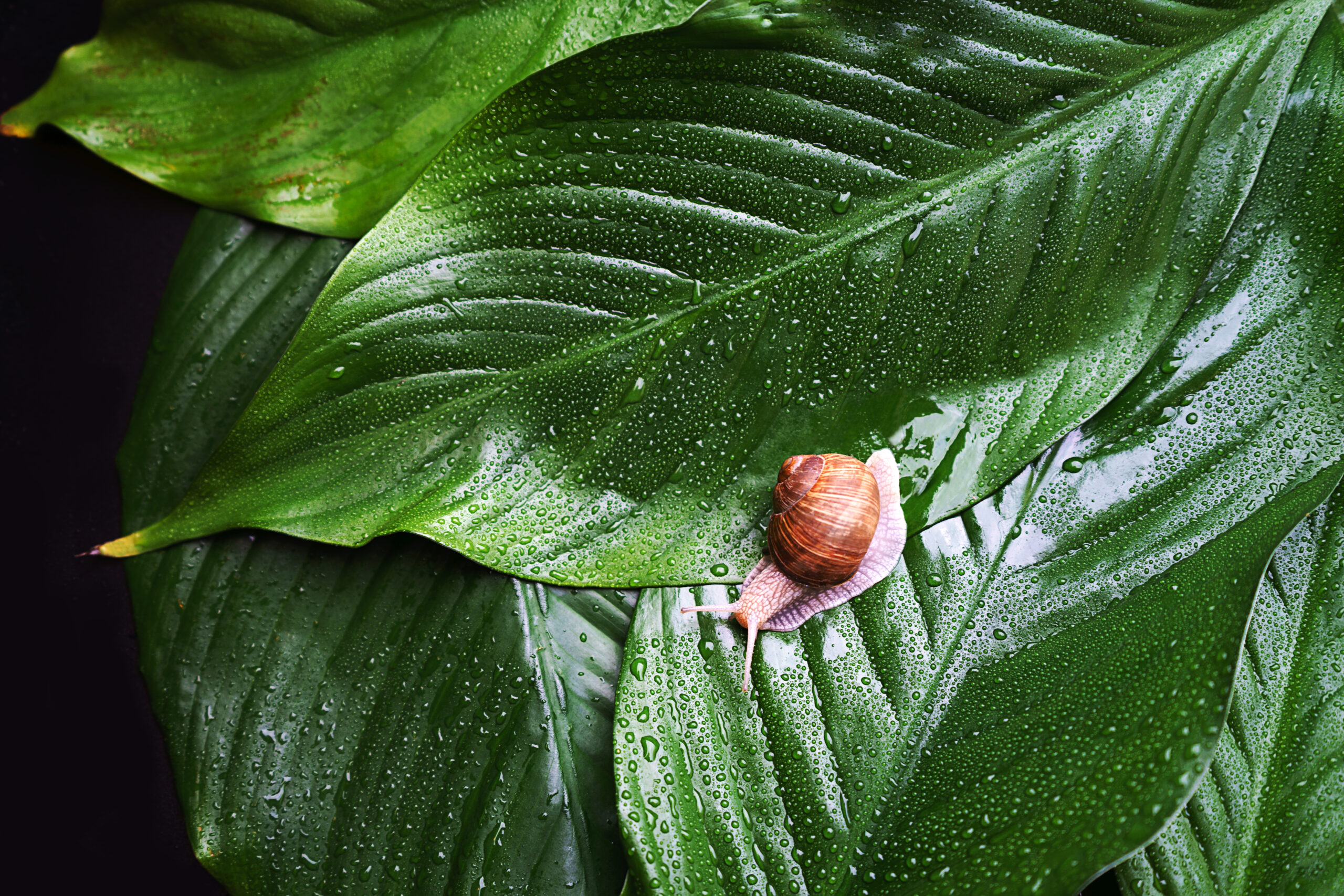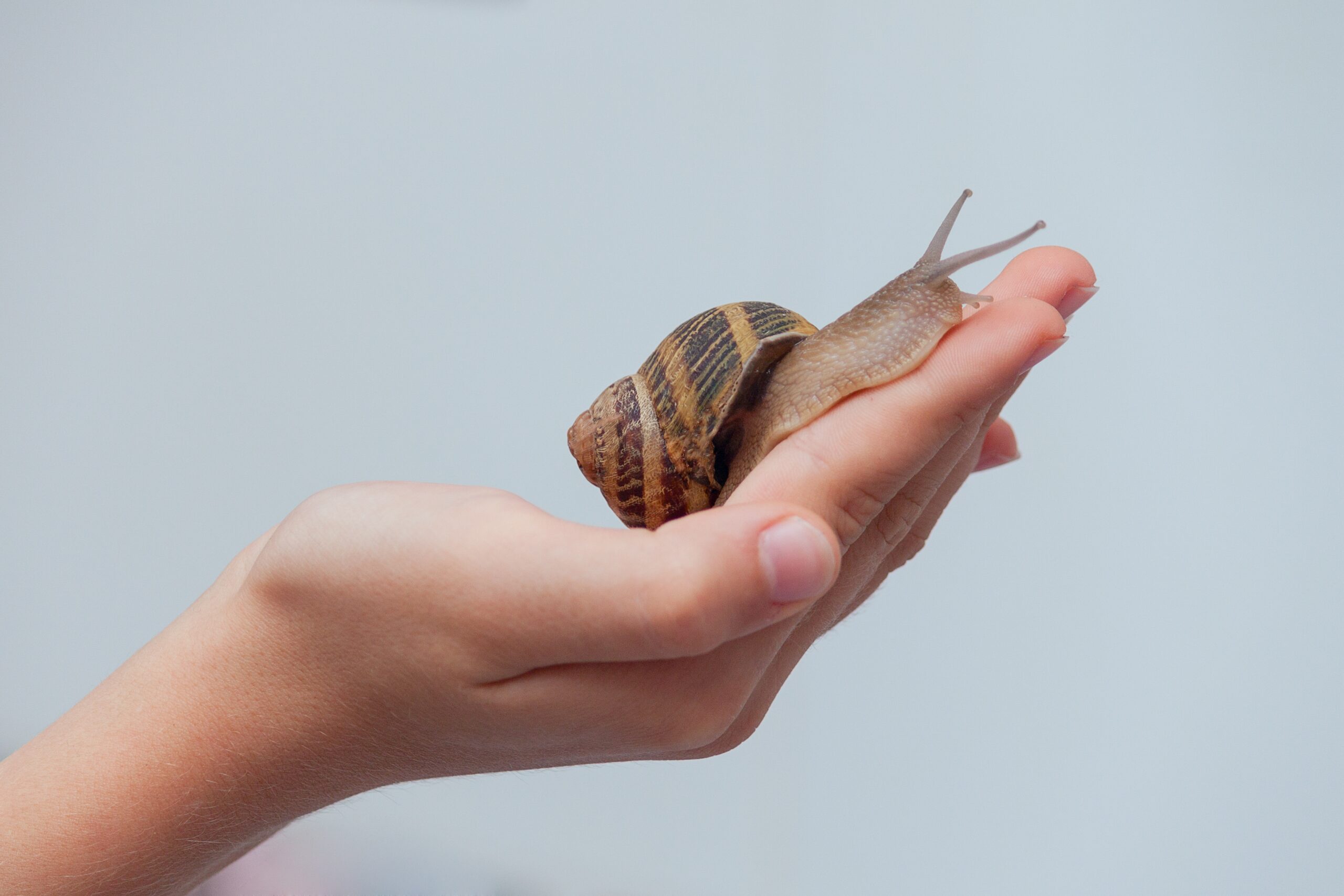Why Is Snail Mucin So Popular In Skincare?
Why Is Snail Mucin So Popular In Skincare?
If there’s one industry that has an endlessly-turning wheel of trends — besides the fashion industry, but that’s another story — it’s the beauty industry. From putty foundations to facial mists, there are many products that suddenly hit the store shelves and are subtly removed years later. One of the latest skincare fads that seems to be here to stay is…snail mucin. It seems like a strange ingredient to include in products you put on your face, but is there a science to this slime? Let’s examine the background and process of using snail mucin in skincare to see if there is actually something to the snail’s secretion.
The Basics of Snail Mucin

As a staple ingredient in many Korean beauty (K-beauty) products, snail mucin has taken the skincare world by storm in recent years. It seems to be a widely-favored ingredient because it works with all skin types and doesn’t clog pores, as it absorbs into the skin when applied. Snail mucin is a secretion from snails (clearly), but it’s not the one that you might be picturing. This secretion is different from the slime trails they create as they slowly travel on the ground. That slime is also protective, but it doesn’t have the healing benefits that snail mucin seems to have.
Rather, snail mucin is the substance that snails secrete when they’re stressed to give additional protection. It’’s also referred to as “snail secretion filtrate” because the snail mucin is sanitized and filtered before being added into skincare products. This interesting ingredient is found in lotions, creams, serums, and tonics from all price points. Scientists are researching the long-term benefits and anti-aging claims regarding products with snail mucin, so the jury is still out on whether this slime is actually a skincare miracle.
The Glowy Details

The history of snail mucin-based skincare is murky, but experts agree that it’s been around for generations. The ancient Greeks are believed to have used snail mucin to combat inflammation. In the 1980s, snail farmers in Chile realized that the newfound softness of their hands was due to the mucin produced by the snails they handled. This led to snail mucin gradually being introduced into skincare products that were sold to the public.
Snail mucin is currently hailed as a miracle-worker in the world of skincare. A quick online search results in pages of reviews from satisfied customers who see a noticeable difference in their skin’s health. Some of the commonly-mentioned benefits of snail mucin are that it moisturizes, generates collagen production, heals, and provides regeneration. There are also claims that it helps with acne scars and burns, but the research on those claims is even thinner than on the anti-aging claims.
The beneficial ingredients commonly found in snail mucin include:
- Allantoin
- Copper peptides
- Glycolic acid
- Hyaluronic acid
- Manganese
- Vitamin A
- Vitamin E
- Zinc
As with any natural skincare product, it is possible to be allergic to snail mucin. If you’ve never used it before, try testing the product on your forearm first. Trust us: it’s a lot easier to deal with a product-based reaction on your arm than on your face!
The Collection Process

Since snail mucin is only produced when the snail is stressed, it makes sense that the slime protects the pest from cuts and infections — and maybe protects us as well. But in a society where cruelty-free and sustainability are valued, how could collecting snail mucin possibly be okay? Many of the companies that create these products understand these concerns and disclose their practices to get ahead of the questions.
For one, mucin is only collected from edible snails in this process. Since the products are used on people’s faces, it’s reasonable to stay away from poisonous snails and only use the ones that could also become escargot. Roman snails, brown garden snails, and giant African snails are the most frequently-used snails for this process. Not all snail mucin is created equal, so the snails and their environment make a true difference in the type of mucin that’s produced.
Apparently, there are plenty of ways to collect stress-induced slime from a snail. These skincare companies use a variety of methods to get the mucin. They need to first create a controlled environment that is calm enough to give the snails space to rest in between the times of mucin collection. Happy snails are healthy snails, which keeps them safe throughout the collection process!
As for the process of actually getting the snails to produce mucin, it differs from company to company. The most popular disclosed methods are:
- Poking the snails
- Spritzing the snails with sodium chloride
- Washing the snails
- Gently steaming the snails
- Placing the snails in a habitat to keep the mucin in one place
Snail mucin seems to keep our skin soft and moisturized, but it’s good to know that it doesn’t have to come at the expense of the snails’ wellbeing. Some companies even claim that their snails enjoy a spa-like experience while they create the mucin!
The Famous Brown Garden Snail

Let’s circle back to the snails that are the reason why we enjoy their moisturizing mucin. One particular type stands out to us due to its common presence in the U.S.: brown garden snails. They are mainly found in states on the West Coast, on the East Coast, and in the southeastern region. If you live in these areas and have a yard full of plants, you’ve probably seen these slimy pests around your home a time or two.
First introduced on plants imported to the U.S., brown garden snails deal some hefty damage to crops and ornamental plants. They have dark brown whorls with yellow patterns on their shells. Like most snails, brown garden snails can self-fertilize to lay eggs that will take about 2 to 3 years to mature into adult snails. They are nocturnal and need excessive moisture to thrive.
The slimy trails of garden snails come from mucus that’s secreted through a gland in their foot, the underside of their bodies. This mucus creates a trail that protects the snail’s soft body from the ground’s rough texture. It also allows them to crawl on plants and flat objects, which is why we often find snails traveling up a flower or exterior wall. The mucin they produce when stressed is one of the most pure and high-quality of them all, making brown garden snails a popular mucin source in the skincare world. They also apparently make for great escargot, but that’s a claim that those of us who would rather use snail skincare products than eat snails will just have to take at face value — literally.
Guard Your Home With Green
Snail mucin seems to be great for our skin barriers, but how can we guard our homes from real snails and other frustrating pests? With efficient treatments from Green Pest Services, of course! Our licensed technicians leave no stone unturned when treating a home or business for persistent pests. We begin each service with a full inspection, then use our observations of pest activity to create a treatment plan customized to solve your pest issues. We are committed to protecting you and your family from pests in every season. Contact us today for a free quote on the most dependable pest control around!
Citations
Brown garden snail. (n.d.). UF: IFAS — Featured Creatures. Retrieved March 25, 2024, from https://entnemdept.ufl.edu/creatures/misc/gastro/brown_garden_snail.htm
Courtney, N.J. (2021, May 20). Can snail mucin really help your skin? What skin experts say. The Healthy. Available at https://www.thehealthy.com/beauty/face-body-care/snail-mucin/ (Accessed March 25, 2024).
Emma, J. (2021, September 24). The invasive brown garden snail in Mississippi. At Home With Jemma. Available at https://www.athomewithjemma.com/2021/09/the-invasive-brown-garden-snail-in.html (Accessed on March 25, 2024).
How is snail mucin collected? Are snails harmed?. (n.d.). SnailyLove. Retrieved March 25, 2024, from https://snailylove.com/how-is-snail-mucin-collected-are-snails-harmed/
Jordan, A. (2022, November 21). Why you should add snail slime to your skincare routine, according to a dermatologist. Women’s Health. Available at https://www.womenshealthmag.com/beauty/g34056795/snail-mucin-for-skin/ (Accessed March 25, 2024).
Mukherjee, T. (2019, August 7). I smeared snail slime on my skin for 1 month. Here’s what happened. Everyday Health. Available at https://www.everydayhealth.com/columns/my-health-story/put-snail-slime-on-my-face-for-a-month-here-are-results/ (Accessed March 25, 2024).
Nelson, C. (2023, October 6). The truth about snail mucin for skin care. Mayo Clinic. Available at https://mcpress.mayoclinic.org/living-well/snail-mucin-for-skincare/ (Accessed March 25, 2024).
Red, M. (2023, November 29). Snail mucin is so good for skin and it’s dermatologist-approved. Byrdie. Available at https://www.byrdie.com/snail-mucin-for-skin-4768132 (Accessed March 25, 2024).
Saguin, J. (2022, March 24). What is snail mucin? Everything to know about its skincare benefits. Available at https://www.goodhousekeeping.com/beauty-products/a39413194/snail-mucin/ (Accessed March 25, 2024).
What is snail mucin?. (2023, January 9). Lumadea Cosmetics. Retrieved March 25, 2024, from https://lumadeausa.com/blogs/news/what-is-snail-mucin
8 Creative Ways to Have a Pest-Free Fourth of July
8 Creative Ways to Have a Pest-Free Fourth of July 8 Creative Ways to Have a Pest-Free Fourth of July Summary: The Fourth [...]
A Simple Guide to Preventing Stinging Pests
A Simple Guide to Preventing Stinging Pests A Simple Guide to Preventing Stinging Pests Summary: Stinging insects are more active in warm weather, [...]
These 10 Natural Mosquito Repellents Can Actually Help
These 10 Natural Mosquito Repellents Can Actually Help These 10 Natural Mosquito Repellents Can Actually Help Summary: Natural mosquito repellents are easier to [...]
How to Get Rid of Carpet Beetles
How to Get Rid of Carpet Beetles How to Get Rid of Carpet Beetles Summary: Carpet beetles are sneaky pests that don’t usually [...]
How Do Roaches Affect Asthma and Allergies?
How Do Roaches Affect Asthma and Allergies? How Do Roaches Affect Asthma and Allergies? Summary: It’s no secret that pests impact human health, [...]
These 5 Carnivorous Pests Might Surprise You!
These 5 Carnivorous Pests Might Surprise You! These 5 Carnivorous Pests Might Surprise You! Summary: There are many eco-friendly ways to prevent pests, [...]

